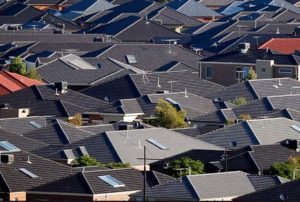Analysing regional population change
 Net overseas migration has been cited as the major driver of Australia’s over all recent population growth, but an analysis by the Australian Bureau of Statistics (ABS) shows that growth factors can vary for different parts of the country.
Net overseas migration has been cited as the major driver of Australia’s over all recent population growth, but an analysis by the Australian Bureau of Statistics (ABS) shows that growth factors can vary for different parts of the country.
“Even in areas where there have been relatively small changes in population overall, there can be substantial variations in one or more of the population components; variations that may have previously gone unnoticed,” the ABC analysis says.
“Moving beyond just describing how much regional populations have changed, to understanding why these changes have occurred is now not only possible, but imperative for better population planning,” it says.
The ABS identified three components to population growth: natural increase – or births minus deaths; net internal migration – the net gain or loss of population through the movement of people within Australia, and; net overseas migration – the net gain or loss of population through migration in and out of Australia.
The analysis found that although the number of people in all of Australia’s capital cities grew in 2016-2017, the proportion that each of these components contributed to population change varied substantially.
Melbourne experienced the largest population growth of all capital cities in 2016-17, increasing by 125,400 people, with each component contributing to this growth. Net overseas migration was the major contributor, accounting for 64 per cent – or 80,000 people.
Natural increase made up 29 per cent – or 36,300 – while net internal migration accounted for 7.3 per cent – or 9,200 – of population growth.
Sydney’s population increased by 101,600 in 2016-17 and, as was the case for Melbourne, net overseas migration was the major contributor with 84,700 people.
But, unlike Melbourne, Sydney experienced a net internal migration loss in 2016-17, meaning 18,100 more people left the city to move to other parts of Australia than arrived.
Sydney lost most people to other parts of New South Wales (40,000 people) and Melbourne (14,400).
In Brisbane and Hobart, the relative contribution of each component was more even.
In Brisbane, net overseas migration and natural increase each accounted for around 37 per cent of population growth in 2016-17 – or 18,000 people each.
Net internal migration made up the remaining 25 per cent – or 12,000 people.
In Hobart, net internal migration contributed to 36 per cent population growth – or 880 people. Net overseas migration contributed 35 per cent – or 840 people and natural increase 29 per cent or 700 people.
Natural increase was the major contributor to population change in Perth and the Australian Capital Territory (ACT).
In Perth, natural increase accounted for 16,300 of the 21,100 population increase in 2016-17.
Net overseas migration contributed 11,700 people, while there was a net internal migration loss of 6,900 people.
In the ACT, natural increase contributed to 49 per cent of population change in 2016-17 – or 3,400 people. Net overseas migration contributed 41 per cent – or 2,800 people – and net internal migration 9.7 per cent or 660 people.
The analysis identified Cranbourne East, in Melbourne’s outer south-east, as the statistical area with the largest growth.
It increased by 7,300 people in 2016-17. Net internal migration accounted for 85 per cent of the growth – or 6,300 people. More people moved into Cranbourne East from other parts of Australia – 8,000 – than any other area in Australia.
Cobbitty – Leppington, in Sydney’s outer south-west, like Cranbourne has also experienced large population growth in recent years due mainly to positive net internal migration.
Around 3,700 more people moved into these than moved out in 2016-17, accounting for 90 per cent of its population growth.
Similar patterns were observed in the outer-suburban areas of Riverstone – Marsden Park in Sydney’s north-west, Mernda in Melbourne’s north-east, Ellenbrook in Perth’s north-east, and Pimpama, an outer northern suburb of the Gold Coast.
For other areas, such as the neighbouring areas of Tarneit and Truganina in Melbourne’s outer west, the contribution of all three components was more even.
In Tarneit, 45 per cent of population change in 2016-17 could be attributed to positive net internal migration, compared with 29 per cent to net overseas migration and 27 per cent to natural increase.
Tarneit had the highest number of births – 930 – for all statistical areas in Australia in 2016-17. In Truganina, 49 per cent of population change in 2016-17 could be attributed to positive net internal migration, compared with 26 per cent to net overseas migration and 25 percent to natural increase.
“In contrast to the outer-metropolitan suburbs discussed above, population growth in the inner-city areas of Australia’s capital cities has been mainly driven by overseas migration,” the ABS analysis said.
Melbourne City experienced a population increase of 4,600 people in 2016-17. Net overseas migration contributed 3,600 people to this total, representing 77 per cent of Melbourne’s population change.
Melbourne attracted more overseas migrants than any other area in Australia with 10,600, but also lost the most through outgoing migration of 7,000.
Laurie Nowell
AMES Australia Senior Journalist












